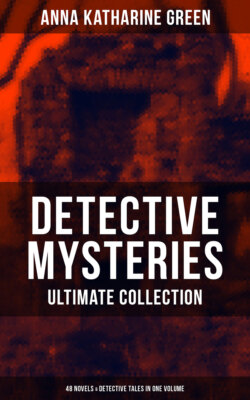Читать книгу Detective Mysteries - Ultimate Collection: 48 Novels & Detective Tales in One Volume - Anna Katharine Green - Страница 114
На сайте Литреса книга снята с продажи.
Chapter XIV.
Memoranda
ОглавлениеTable of Contents
“It is like and unlike what I have just related to you,” began young Adams. “In my previous confession I mixed truth and falsehood, and to explain myself fully and to help you to a right understanding of my wife’s act, I shall have to start afresh and speak as if I had already told you nothing.”
“Wait!” cried Mr. Gryce, in an authoritative manner. “We will listen to you presently;” and, leaning over the inspector, he whispered a few words, after which he took out a pencil and jotted down certain sentences, which he handed over to this gentleman.
As they had the appearance of a memorandum, and as the inspector glanced more than once at them while Mr. Adams (or Cadwalader, as he should now rightfully be called) was proceeding with his story, I will present them to you as written.
Points to be made clear by Mr. Adams in his account of this crime:
1. Why a woman who was calm enough to stop and arrange her hair during the beginning of an interview should be wrought up to such a pitch of frenzy and exasperation before it was over as to kill with her own hand a man against whom she had evidently no previous grudge. (Remember the comb found on the floor of Mr. Adams’s bedroom.)
2. What was the meaning of the following words, written just previous to this interview by the man thus killed: “I return you your daughter. Neither you nor she shall ever see me again. Remember Evelyn!”
3. Why was the pronoun “I” used in this communication? What position did Mr. Felix Adams hold toward this young girl qualifying him to make use of such language after her marriage to his brother?
4. And having used it, why did he, upon being attacked by her, attempt to swallow the paper upon which he had written these words, actually dying with it clinched between his teeth?
5. If he was killed in anger and died as monsters do (her own word), why did his face show sorrow rather than hate, and a determination as far as possible removed from the rush of over-whelming emotions likely to follow the reception of a mortal blow from the hand of an unexpected antagonist?
6. Why, if he had strength to seize the above-mentioned paper and convey it to his lips, did he not use that strength in turning on a light calculated to bring him assistance, instead of leaving blazing the crimson glow which, according to the code of signals as now understood by us, means: “Nothing more required just now. Keep away.”
7. What was the meaning of the huge steel plate found between the casings of the doorway, and why did it remain at rest within its socket at this, the culminating moment of his life?
8. An explanation of how old Poindexter came to appear on the scene so soon after the event. His words as overheard were: “It is Amos’s son, not Amos!” Did he not know whom he was to meet in this house? Was the condition of the man lying before him with a cross on his bosom and a dagger in his heart less of a surprise to him than the personality of the victim?
9. Remember the conclusions we have drawn from Bartow’s pantomime. Mr. Adams was killed by a left-handed thrust. Watch for an acknowledgment that the young woman is left-handed, and do not forget that an explanation is due why for so long a time she held her other arm stretched out behind her.
10. Why did the bird whose chief cry is “Remember Evelyn!” sometimes vary it with “Poor Eva! Lovely Eva! Who would strike Eva?” The story of this tragedy, to be true, must show that Mr. Adams knew his brother’s bride both long and well.
11. If Bartow is, as we think, innocent of all connection with this crime save as witness, why does he show such joy at its result? This may not reasonably be expected to fall within the scope of Thomas Adams’s confession, but it should not be ignored by us. This deaf-and-dumb servitor was driven mad by a fact which caused him joy. Why?
12. Notice the following schedule. It has been drawn up after repeated experiments with Bartow and the various slides of the strange lamp which cause so many different lights to shine out in Mr. Adams’s study:
White light—Water wanted.
Green light—Overcoat and hat to be brought.
Blue light—Put back books on shelves.
Violet light—Arrange study for the night.
Yellow light—Watch for next light.
Red light—Nothing wanted; stay away.
The last was on at the final scene. Note if this fact can be explained by Mr. Adams’s account of the same.
With these points in our mind, let us peruse the history of this crime and of the remote and possibly complicated causes which led to it.
